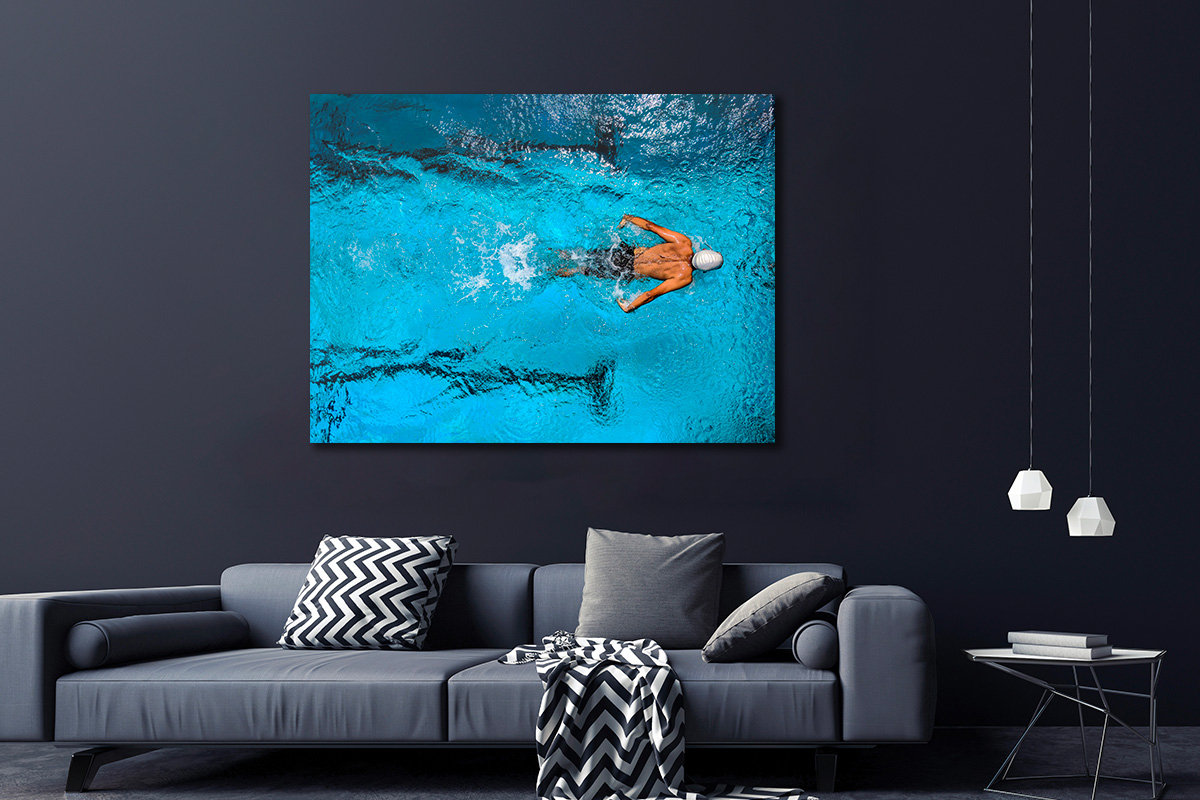How to photograph a subject in movement ?
18/09/2023
Photography captures a moment of life for eternity but it’s still necessary to be able to immortalize its subject to keep a high-quality image. A slight artistic blur can add charm to a shot, but too much motion blur or camera shake threatens the quality of your photos.
Sports photography, action photography, street photography, and wildlife photography: for all of them sharpness is a guarantee of quality. When the person, animal, or object you want to photograph is in motion, getting a sharp photo requires expertise.

Our tips for photographing a subject in motion
First, make sure to choose a good lens for photographing moving subjects. Fixed focal length lenses such as 50 mm lenses offer better image quality than zoom ones.
Use aperture priority mode (designated by the letter A or AV depending on your camera) to control field depth and better highlight your sharp subject against a blurred background. Shutter priority mode (S, T, or sometimes TV) will affect the blur in the image. We’ll see that it can help you achieve directional blur or freeze motions with more accuracy.
Is your subject making fast movements? Moving stealthily in front of you? This may be the case if you’re lucky enough to experience a photo safari. Your camera’s burst mode, also available on smartphones, allows you to capture several images in a row. This type of trigger multiplies your chances of getting the right shot.
As in every photo outing or indoor shoot, make sure you have sufficient lighting. When you reduce the exposure time to get a sharp image and stop the subject’s movement, your sensor perceives less light. It’s therefore essential to have good exposure and sometimes to increase the aperture of your camera.
Prepare the framing of your photo
To get a good photo of a moving subject, technical settings are important but don’t forget to work on your composition for a more aesthetic and engaging image. Your framing will convey a point of view, your narrative. In sports photography, when your subject approaches the finish line, place him on one side of the image to emphasize the effort he still has to make and bring tension to the image.
If you capture the movement of the sea, a low-angle view will tend to show the strength of the elements and give an impression of intensity, even danger.
All your framing choices will create a story that will be told to admirers of your photo print.

Ensure the stability of your camera
To capture sharp and detailed images of moving subjects, ensure first the stability of your camera. Ideally, use a tripod to hold your camera steady. This essential accessory for professional photographers is useful in case of strong winds and to limit motion blur due to our imperceptible movements. If you don’t have a tripod, stay calm and anchored in a comfortable position to stabilize your hand when pressing the shutter.
By steadying your body, you can guarantee the stability of your camera to achieve clear and precise images of moving subjects and master long exposure photography, indoors and during your photo outings.
Adapt the shutter speed to the speed of your subject
Photography enthusiasts know it well: mastering the shutter speed of your camera is essential for quality shots, even when the speeds are off the charts!
The shutter speed affects your image quality. Play with this setting to capture the movements of your subject. If it is too slow, the subject will be blurry; too fast, your subject will be frozen, but the background will be blurry. It’s important to find a compromise. Generally, a shutter speed of around 1/125 works for moderate-speed subjects, like somebody walking at a regular pace. For faster subjects, a faster shutter speed is necessary, 1/500 during a race, and sometimes more.
Increasing the shutter speed minimizes the blur caused by movement, but it’s important to ensure the stability of your camera in case of long exposure.

Pay attention to focus
Your focus is key for successful photos of moving subjects and a good sense of depth. The focus allows you to choose the area of the image that you want to highlight by making it sharp, while other parts remain blurry. For photos of moving subjects choose a precise focus.
Set a central focus if your subject is at the center of your image and doesn’t move too quickly. The focus tracking can ensure that the subject remains sharp despite faster movements. The focus can be adjusted manually or set automatically by your cameras.
Keep practicing to master this technique
As with any discipline, regular practice guarantees an improvement in your skills. Grab your camera or your smartphone and experiment using different techniques to find your style.
There are no rules: a subject with graceful movements can be highlighted by a beautiful composition using a blur that emphasizes the dynamics of the image. To photograph a dance or the flow of a river for instance.
The same scene with a perfectly sharp subject will also be pleasing to the eye, although it then conveys a sense of effort and transmits a different artistic intention.

Print your best photos in professional quality
Printing photos in professional quality is a great idea for wall decoration. Our gallery-quality prints bring your best shots to life. Perfectly sharp, they capture the dynamism of your subject and create a natural and elegant impression of movement. With the presence of a blurred area, you will get a photo print with a more artistic style.
Fine Art Finish, Aluminum, Glossy Plexi, or Matte Plexi: any of our professional quality printing finishes can be chosen to showcase the most beautiful photos you have taken of your subjects in motion.
Now you know all the secrets of a great photo print!
© 2023, Justine Grosset for LabKorner